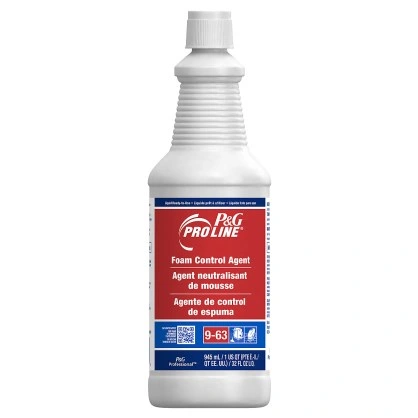How to Achieve Ideal Foam Control for Improved Production Performance
How to Achieve Ideal Foam Control for Improved Production Performance
Blog Article
Understanding the Significance of Foam Control in Industrial Processes
In industrial processes, foam control is often a neglected yet important aspect that directly influences operational performance and item integrity. The presence of excessive foam can lead to substantial obstacles, consisting of interrupted mixing and reduced reaction kinetics, which may eventually impact product high quality across numerous fields such as drugs and food manufacturing. Comprehending the nuances of foam management, including possible improvements and efficient methods, raises crucial questions about ideal methods and future developments. What are the implications for markets aiming for enhanced productivity and conformity?

The Role of Foam in Sector
Foam plays a substantial duty in different commercial processes, affecting both effectiveness and product top quality. In industries such as food and drink, pharmaceuticals, and petrochemicals, foam can offer both destructive and helpful purposes. In the food market, foam stablizing is essential throughout processes like whipping cream or generating beer, where the quality of foam straight influences consumer assumption and product characteristics.
In chemical production, foam can work as an obstacle, preventing the proper mixing of reagents, which can result in insufficient responses and suboptimal returns. On the other hand, in processes like flotation protection in mineral handling, foam is utilized to separate useful minerals from waste product, enhancing healing prices.
Additionally, in wastewater therapy, foam development can indicate the presence of organic issue, acting as a crucial specification for process surveillance. The capacity to regulate foam is important for preserving process stability and enhancing operational expenses. Recognizing the duty of foam in commercial applications permits drivers and designers to apply reliable foam monitoring strategies, ensuring that foam contributes positively to overall process performance while reducing its prospective drawbacks.
Common Challenges of Foam Development
Several sectors encounter considerable difficulties because of the unplanned development of foam throughout different processes. Foam can disrupt the performance of procedures, causing enhanced downtime and higher operational prices. In markets such as pharmaceuticals, food and beverage, and wastewater treatment, foam can prevent blending, minimize product return, and make complex separation processes.
In addition, foam can produce safety hazards by blocking clear presence, which is essential in settings where accurate measurements and surveillance are needed. The existence of foam can also bring about devices damage, as excessive stress accumulation might take place in activators and storage tanks.
Additionally, the requirement for frequent treatment to manage foam can draw away resources and labor, ultimately impacting performance. Ecological regulations posture one more obstacle, as extreme foam can bring about non-compliance problems in effluent discharge, demanding extra therapy processes.
Influence on Product High Quality

In chemical manufacturing, foam can impede reaction kinetics by restricting gas-liquid contact, bring about incomplete reactions and reduced yields. This not just affects Read Full Report the performance of production however can additionally result in low-grade end products that do not meet regulative criteria or customer specifications.
Additionally, in drugs, foam development during formulation processes can introduce air bubbles right into delicate substances, compromising drug efficacy and security. Furthermore, foam can trigger functional concerns such as overflow and equipment malfunctions, enhancing downtime and maintenance expenses, additionally influencing product top quality and uniformity.
Approaches for Effective Foam Control
Dealing with the difficulties positioned by foam is crucial for preserving product high quality across different industrial industries. Reliable foam control approaches are essential to mitigate the unfavorable effects of foam formation, which can interfere with procedures and concession item stability.
One of the primary strategies involves the option and application of ideal antifoaming representatives. These representatives are created to minimize surface tension and hinder bubble development, and their efficiency can vary based upon the details procedure conditions. Regular surveillance of foam degrees is critical to make sure timely intervention, permitting drivers to apply antifoaming representatives prior to foam ends up being a significant concern.
Furthermore, enhancing process criteria such as temperature and agitation can play a critical role in foam monitoring. Minimizing agitation strength or changing feed prices can lessen foam generation. Implementing mechanical foam control tools, such as foam breakers or defoamers, can likewise give efficient services for high-foaming applications.
Educating workers on foam management strategies and the importance of keeping optimal operating problems further boosts foam control efforts. Foam Control. By utilizing a combination of these methods, sectors can successfully manage foam, making certain operational effectiveness and keeping the quality of their items
Future Fads in Foam Management
How will innovations in technology shape the future of foam administration in check my source industrial processes? The combination of expert system (AI) and artificial intelligence will certainly change foam control strategies, enabling real-time tracking and adaptive actions to foam development. These modern technologies can assess historical information and operational parameters to anticipate foam habits, enabling preemptive procedures that improve procedure effectiveness.
Additionally, the advancement of sophisticated foam control representatives, including ecologically friendly and bio-based options, is acquiring traction. These innovations not only mitigate foam yet additionally line up with sustainability goals, decreasing the environmental footprint of commercial procedures.
Automation will certainly likewise play an important function, as automated foam control systems can optimize the dosage of defoamers based upon real-time dimensions, reducing waste and enhancing effectiveness.
In addition, the fostering of IoT (Web of Things) tools will help with seamless interaction between equipment and foam control systems, making certain an all natural method to foam management. (Foam Control)
Verdict
In verdict, efficient foam control is important for maximizing industrial processes throughout various sectors. The challenges posed by foam development can considerably influence item quality and functional efficiency. Applying tactical foam monitoring methods, consisting of the use of antifoaming representatives and process optimization, minimizes these difficulties. As sectors continue to evolve, continuous advancements in foam control innovations will additionally boost efficiency and sustainability, making certain compliance with ecological regulations while preserving the honesty of products.
In the food sector, foam stabilization is vital during processes like whipping cream or generating beer, where the top quality of foam directly affects customer assumption and item features.
Understanding the role of foam in industrial applications enables designers and drivers to implement effective foam management strategies, guaranteeing that foam adds favorably to general procedure efficiency while lessening its possible downsides.
Normal surveillance of foam degrees is essential to guarantee timely intervention, allowing operators to use antifoaming representatives prior to foam comes to be a substantial problem.
Carrying out mechanical foam control gadgets, such as foam breakers or defoamers, can likewise supply efficient services for high-foaming applications.
The combination of synthetic intelligence (AI) and read this post here machine learning will certainly change foam control methods, making it possible for real-time tracking and adaptive responses to foam development.
Report this page